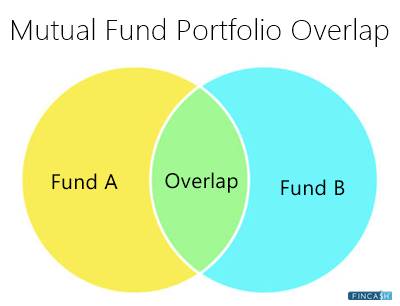Portfolio Turnover Ratio in Mutual Funds: What It Means & Why It Matters
When most investors evaluate Mutual Funds, their primary focus is usually on past returns, star ratings, or fund rankings. But very few consider how those returns are actually generated — and that’s where the Portfolio Turnover Ratio (PTR) comes into play. PTR is one of the most underrated metrics in mutual fund analysis, yet it can reveal a lot about your fund manager’s investment style, cost structure, and even tax implications. Are they constantly buying and selling to chase short-term gains, or are they holding quality stocks for the long term? Understanding this can help you align your fund choices with your personal investment goals and risk tolerance. In this blog, we’ll break down what PTR means, how it’s calculated, why it matters for your portfolio, and how to use it effectively to choose the right mutual funds — with real-world examples and actionable insights.
What is Portfolio Turnover Ratio?
Portfolio Turnover Ratio (PTR) is a measure that tells you how frequently the holdings in a mutual fund are bought and sold over a period—typically one year. It reflects the fund manager’s investment style—whether they actively churn the portfolio or follow a steady, buy-and-hold approach.
In simple terms:
- PTR shows how “fast” your fund is changing clothes.
- Higher PTR = frequent changes
- Lower PTR = long-term conviction
How is Portfolio Turnover Ratio Calculated?
Formula:
PTR = Lesser of total purchases or sales / Average Assets Under Management (AUM)
Example: If a fund has ₹100 crore in average AUM and makes ₹40 crore worth of sales, and ₹50 crore of purchases during the year, PTR = ₹40 crore / ₹100 crore = 40%
Talk to our investment specialist
Why is PTR Important for Investors?
PTR isn't just a statistic—it's a behavioral signal of your fund manager.
Here’s what it reveals:
| Aspect | High PTR | Low PTR |
|---|---|---|
| Strategy | Active trading | Long-term holding |
| Trading Cost | High | Low |
| Tax Impact | More short-term gains | Mostly long-term |
| Style | Opportunistic | Conservative |
| Ideal For | Tactical investors | Long-term wealth creators |
Real-Life Fund Examples (As of 2024-25)
| Fund Name | 3-Year Avg PTR | Style |
|---|---|---|
| Quant Flexi Cap | 175% | Aggressive, high churn |
| PPFAS Flexi Cap | 27% | Global exposure, steady |
| Axis Bluechip | 30% | Large-cap, stable |
| SBI contra fund | 45% | Value, moderately active |
| HDFC mid-cap Opp | 70% | Momentum + growth blend |
👉 Funds like Quant Flexi Cap aim to capture fast-moving opportunities, while PPFAS or Axis lean towards compounding via conviction.
How Does PTR Impact Your Returns?
1. Transaction Costs:
- Higher PTR = more brokerage, STT (Securities Transaction Tax), and hidden costs → slightly reduces NAV.
2. Tax Efficiency:
- Frequent buying/selling leads to short-term Capital gains (STCG), taxed at 15%.
- Low PTR funds hold longer → long-term Capital Gains (LTCG), taxed at 10% beyond ₹1 lakh per year.
3. Volatility:
- High PTR funds might be more volatile due to frequent shifts.
- Low PTR funds are generally more stable and predictable.
Where Can You Check Portfolio Turnover Ratio?
- Mutual Fund Factsheets (monthly/quarterly)
- AMC websites (under fund details)
- SEBI-mandated disclosures
Always prefer checking the 3-year average PTR to filter out one-time anomalies.
How to Choose the Right PTR for Your Investment Style?
| investor Type | Ideal PTR |
|---|---|
| Long-term (5+ years) | < 40% |
| Tactical/Momentum seekers | 60–100% |
| Thematic/Sectoral investors | > 100% may work |
| Beginners | Prefer < 50% for cost-Efficiency |
Reminder: High PTR ≠ bad and Low PTR ≠ good. What matters is alignment with your goals and risk profile.
Portfolio Turnover Ratio vs. Portfolio Churn Rate
Both mean the same thing. Portfolio Churn Rate is just another term used interchangeably with PTR in India.
Pro Tip: Use PTR Along with These Metrics
- Expense Ratio – Are you paying too much for active churn?
- Alpha & Beta – Is the fund delivering returns above the risk it takes?
- Standard Deviation – Is the Volatility tolerable?
When PTR is high, ensure the Alpha is also high, otherwise, it may just be activity without performance.
Summary Table: Key Takeaways
| Feature | High PTR | Low PTR |
|---|---|---|
| Fund Manager Style | Aggressive | Passive/Buy & Hold |
| Ideal for | Short to Medium Term | Long-Term Goals |
| Tax Burden | Higher | Lower |
| Expense Impact | Higher | Lower |
| Returns Consistency | May vary | Often stable |
Final Thoughts: Don’t Ignore the Steering Wheel
You wouldn’t sit in a car without knowing how it handles corners.
Similarly, don’t invest without knowing how your fund manager drives the portfolio.
Portfolio Turnover Ratio = the steering wheel of your mutual fund.
Understand it. Use it. And align it with your financial journey.
FAQs
Q1. Is high Portfolio Turnover Ratio bad?
A: Not necessarily. It depends on the fund’s objective. A momentum or tactical fund may naturally have a high PTR, while long-term Equity Funds may keep it low.
Q2. Where is PTR mentioned for a mutual fund?
A: In the factsheet of the scheme or on the AMC website under performance metrics.
Q3. What is a good PTR range for SIP investors?
A: Ideally < 40%, since SIPs work best when the fund compounds over time with low cost leakage.
Q4. Does Portfolio Turnover Ratio affect NAV?
A: Yes, indirectly. A high PTR leads to more transactions, raising costs that may eat into NAV.
All efforts have been made to ensure the information provided here is accurate. However, no guarantees are made regarding correctness of data. Please verify with scheme information document before making any investment.
You Might Also Like



Pgim India Mutual Fund (formerly DHFL Pramerica Mutual Fund)


The Hidden Impact Of Total Expense Ratio On Your Mutual Fund SIP

Standard Deviation In Mutual Funds - Meaning, Formula, Example & Risk Analysis

How To Rebalance Your Mutual Fund Portfolio – And Why It’s Critical For Long-term Wealth

A Simple Guide To Mutual Fund Risk: Sharpe, Sortino, Alpha, Beta, And More Ratios




